How to Make Jam and Jelly from Frozen Fruit
When you’re busy in the garden it’s great to have time-saving tricks and tips up your sleeve! One of my favorite shortcuts is to freeze the harvest and make jelly and jam from frozen fruit when I have more time. Believe me, this has saved me a lot of headaches during harvest season!
There’s never enough time to do everything in summer. Plus, hot days make the thought of stirring a boiling pot of jam and canning it almost unbearable.
This post contains affiliate links or advertisements. You won’t pay extra but I may earn a small commission if you purchase products through those links. Thank you for supporting The Self Sufficient HomeAcre!

You can make freezer jams with your fruit fresh, or you can peel, chop, and freeze it for later. This is a great time-saver. I have several freezer jam recipes I like, but I also like having canned jam and jelly for gift-giving and shelf-stable food storage.
Check out How to Make Peach Freezer Jam from Fresh or Frozen Peaches, How to Make Raspberry Freezer Jam & Strawberry Rhubarb Freezer Jam for some delicious freezer jam recipes!
Did you know that you can freeze that fruit and use it to make jam during the fall or winter, when the weather has cooled down? Those frozen berries, peaches, and plums will make delicious jams and jellies and you don’t have to overheat the house in the process!
How to Freeze Fruit for Later
When you are ready to freeze your summer fruits, follow these instructions to make your fall and winter jam sessions go more smoothly.
- Look at the recipe you plan to use for jam and check all of the ingredients and directions.
- Peel, pit, and chop the fruits as though you were getting ready to make jam right away.
- Peaches can be peeled quickly and easily by dipping in scalding water then ice water. The peels will slip right off.
- Strawberries should be crushed and larger fruits chopped before freezing.
- For jelly, you can crush the fruit then strain and measure the juice before you freeze it, or you can freeze the fruit whole and strain the juice after thawing.
- Once your fruits are prepared, measure the proper amounts, and freeze enough in one container to make a single batch of jam or jelly.
- Fruit that oxidizes, or turns brown, should be treated with lemon juice or citric acid to keep it looking fresh in the freezer.
- You may also add any juice called for in the recipe at this point too.
- Do not add sugar and pectin until you are ready to make your jam.
- Label the containers with all of the ingredients and their measurements. Make a note about what recipe you intend to use.
- Use a vacuum sealer to prevent freezer burn if you will not be able to make the jam pretty quickly.
- You can also use freezer containers that are BPA free and pack the fruit in tightly, then add a layer of lemon or other fruit juice over the top.
What If I have a Frozen Block of Fruit?
We don’t always have it together enough to freeze our fruit in perfect sized containers for making a batch of jam, do we?
I’m guilty of freezing solid chunks of unmeasured fruit, then wondering what to do with it.
Good news! You can thaw the entire block of frozen fruit in your pan, then measure out the amount needed for a batch. Just refrigerate the rest until you can make the next batch…but be sure to use it up quickly so it doesn’t turn brown and lose nutritional quality.
How to Make Jam or Jelly
When you’re ready to make jam or jelly, pull the fruit out of your freezer and thaw it enough to loosen the mixture from the container.
Place the fruit into your non-reactive pan and heat on medium-low until thawed. If the fruit or juice was frozen in the proper measurements for a batch of jam or jelly, you’re ready to go. If not, measure out the right amount for your batch of jelly or jam and continue with the recipe instructions as you normally would.
Step by Step Instructions for Making Jam
- Fill your water bath canner with water deep enough to cover jars
- Heat the water and jars up to about 180 degrees Fahrenheit so that the jars are kept hot until you fill them with jam
- Place your measured fruit and/or juice into a non-reactive saucepan
- Measure sugar and pectin according to the recipe and set aside
- Prepare canning lids according to manufacturer’s instructions
- Begin heating fruit on a medium-high burner and stir constantly to prevent scorching
- When the fruit comes to a full rolling boil, add pectin mixed with a small amount of the sugar and stir in
- Continue stirring fruit and bring it to a full rolling boil
- Boil for one minute, stirring constantly, then turn off the heat
- Ladle jam into sterile jars, leaving the proper headspace according to the recipe (usually 1/4 inch)
- Wipe the rim of each jar with a clean, damp cloth
- Place a canning lid on the jar and tighten the screw band until it is finger tight
- Use a jar lifter to place filled jars in the water bath canner, being careful not to tilt the jar and get jam under the canning lid
- Begin processing time after the water comes to a full rolling boil
- Process the jars of jam in your water bath canner for the proper time listed in your recipe
- Remove jars from boiling water with a jar lifter and place on a clean towel on your counter, leaving an inch or two between each jar
- Do not tighten screw bands or press down on lids
- Allow the jam to cool completely before you test the seal
- When jars of jam are cool, test to make sure that they sealed properly
- Remove screw bands and wash the bands and the jars thoroughly with soapy water to prevent mold from growing on any dripped jam
- Refrigerate and use any jam that did not seal properly
Use updated recipes for canning jams and jellies and follow the recipe if it is not in agreement with my instructions above!
Notes for Making Jam from Frozen Fruit
- Freezing fruit may reduce the jelling effect of the natural pectin. You may need to increase the amount of pectin added to the jam or jelly.
- You may experiment with different fruits and see if you need to add extra pectin, or you may add extra just to be sure your recipe jells properly.
- Test the jam or jelly to see if it will jell up properly by putting several metal spoons in your freezer before you begin a jam making session. After cooking jam, and before canning it, put a small amount of the jam on one of the frozen spoons and wait a moment. If the jam or jelly ‘sheets’ and sticks to the spoon, it should jell up once cool.
- I recommend using bulk pectin and adding 1 Tbsp extra pectin per 3 to 4 pints of jam.
- One 1.75 oz package of pectin contains 3 or 4 tablespoons, depending on the variety.
- Low or No-sugar needed pectins usually have 3 tablespoons of pectin in a 1.75 oz package.
- Regular pectin usually contains 4 tablespoons of pectin.
- Check the package for instructions. I use Ball Flex batch, no-sugar needed pectin, and have very good results.
- Here is a great resource for making jam.
Canning Tips for Making Jam
Most jam and jelly requires a processing time of 10 to 15 minutes for half-pint or pint containers, depending on your elevation.
For more home preservation instructions, check out my posts Cranberry Orange Marmalade and How to Store Your Home Canned Foods.
For complete instructions for making jam and jelly, refer to the instructions included with your pectin, or visit the National Center for Home Food Preservation’s website.
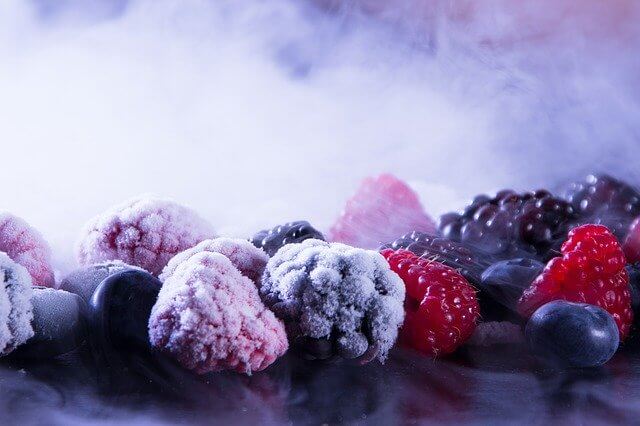
Jam from Frozen Fruit – Purchased Fruit
Not everyone has their own berry patch or orchard. It’s wonderful if you have a fruit stand nearby or your store carries locally raised fruit in season. You may preserve these wholesome foods by freezing, canning, or creating jam from it right away.
But if you don’t have a great deal of fresh fruit available in your area it doesn’t mean that you can’t put up some of your own jams and jellies!
Check the frozen section for strawberries, pie cherries, rhubarb, peaches, and other goodies. Buy them when there is a good sale and make some jam for gifts around the holidays. Remember to follow the same instructions listed above for thawing, measuring, and determining the amount of pectin needed.
You’ll enjoy the fruits of your labor spread on your toast, as a topping for ice cream or pancakes, or in a batch of jam thumbprint cookies all year round!
Do you make jam and jelly from frozen fruits? What is your favorite homemade jam or jelly recipe?
Want More Jam & Jelly Recipes?
I’ve got you covered! You see, I have made countless batches of jam and jelly in my day and I like to share the recipes and instructions with my readers. I hope you get a chance to try a few of these delicious preserves!
Apple Jam Canning Recipe with Printable Gift Tags & Recipe Cards
How to Make Cherry Jam from Scratch
Strawberry Jam – Low Sugar Recipe
Cranberry Jam with Free Printable Labels
Easy Cranberry Jelly with Free Printable Labels
Apple Cranberry Jam with Free Printable Labels
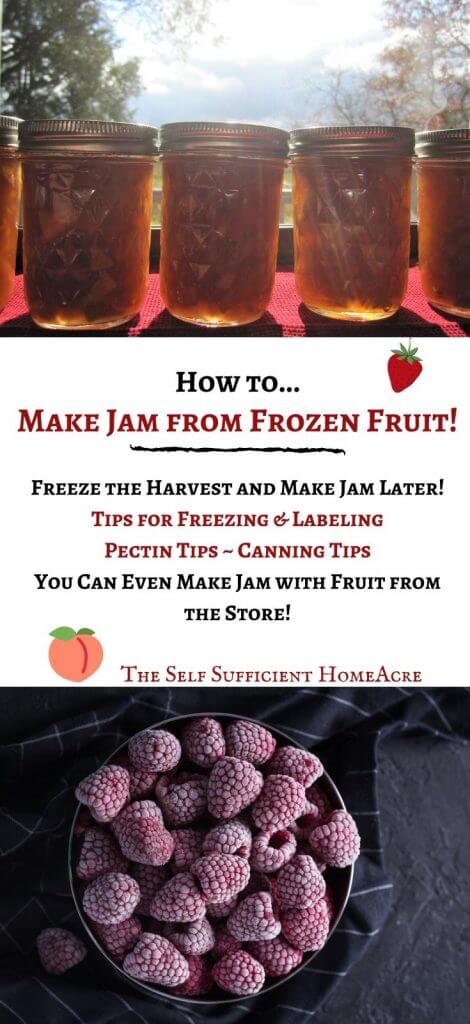
For more information on home canning, visit the National Center for Home Food Preservation.


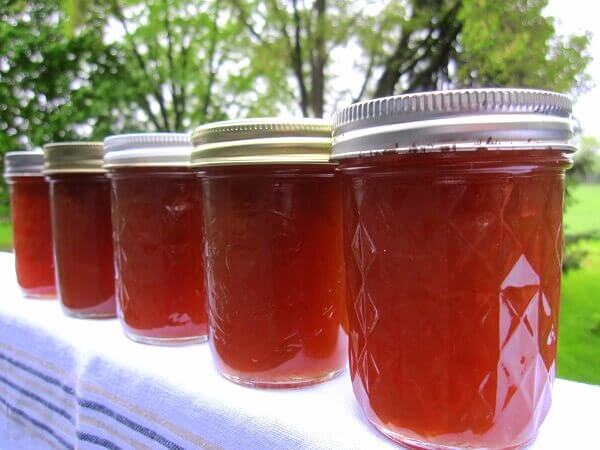

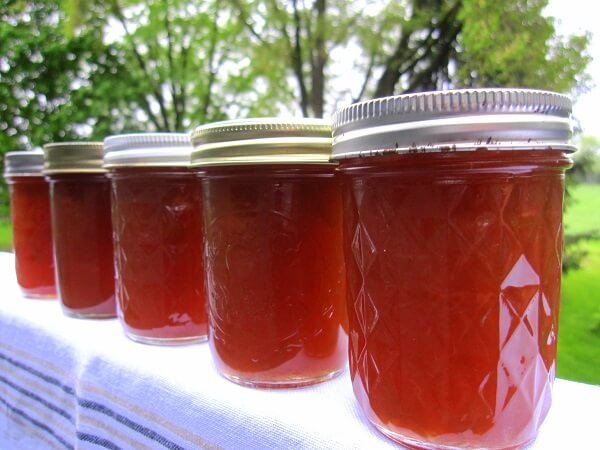

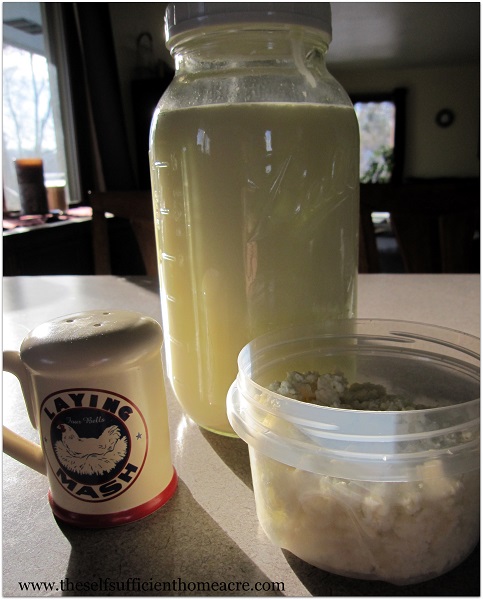

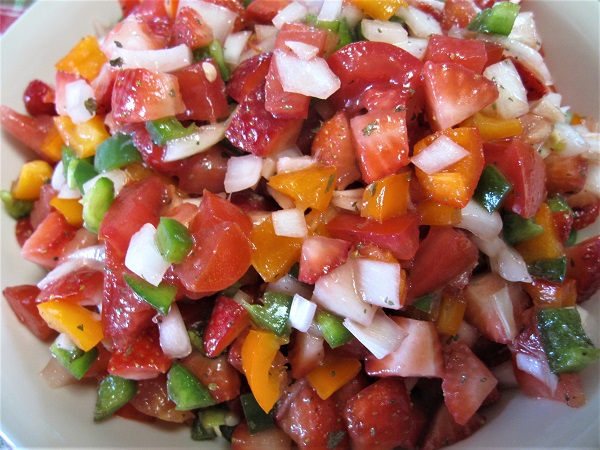
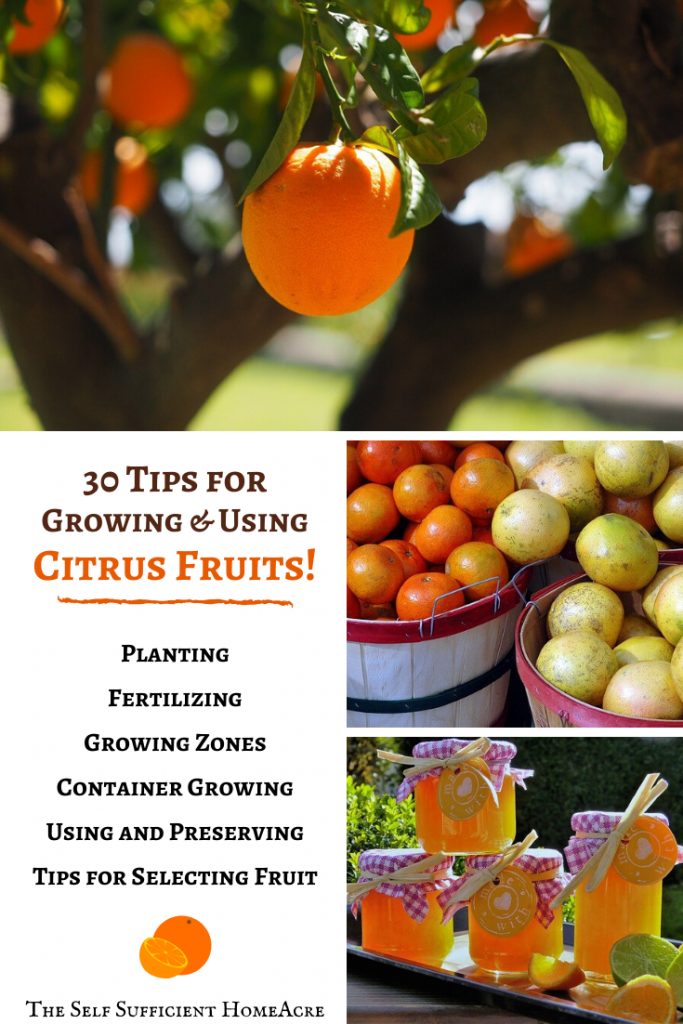

Do I thaw rhubarb when making jam with frozen rhubarb.
Hi Mary,
Yes, I would thaw it just before making jam so that you can measure it properly. Enjoy your jam!
Can I still make plum jelly after freezing the pulp, even though it is mushy after peeling and pitted?
Dear Lisa, I have a lot of plums. Can I freeze them for jelly or jam even tho they make a mushy pulp whe peeled and pitted?
Hi Richard,
As long as your plums were not mushy due to going bad, you should be able to make jam or jelly from them… both fresh or frozen. If you freeze them, you will probably need to use more pectin than you would need to use for jam made with fresh fruit.
Best wishes
Hey, Lisa!
Your fruit jams are making me hungry! They look so yummy!
I really love freezer jam, because it tastes so fresh, but any home made jam is really special.
I am coming out of hiding to try to do a little blogging again here and there. Thank you for hosting this link party every week. I really love your focus. Makes me remember why I enjoyed blogging in the first place.
Much love, Laurie
Hi Laurie! I’m so glad to hear that you are blogging again! I love having homemade jams and jellies to give as gifts and to enjoy on toast. 🙂
Thank you for hosting! This is what I featured the week of 9-7 to 9-11 on my blog. On Tuesday was Broasted Chicken. Wednesday was American Goulash. Thursday was Peanut Butter and Jelly Cheesecake. And winding up this week was 30 Minute Flaky Chicken Pot Pie. Enjoy!
Food in jars just make my day 🙂 Thank you for hosting & for the feature of my blackberry jam! Have a beautiful week, Lisa!
I’m happy to share your jam recipe, Suzan! Thanks for joining us and sharing your wonderful posts!
Lisa,
Thanks so much for taking the time to host each week!!
It is greatly appreciated!!
Stay safe, healthy and happy!
Hugs,
Deb
Thank you for sharing your lovely posts each week, Deb! I hope you are safe, healthy, and happy too!
Hi, Lisa – SO grateful for your site – hoping you can HELP me! I’ve been brushing up on jam making for a monumental project with my daughter & her fiance: making about 150 – 160 (4) ounce jars of strawberry rhubarb jam to give as wedding favors. (The story: he likes strawberry pie, she likes rhubarb pie – it’s the perfect pairing, like them – ALL made & grown in Michigan, meaning the 2 of them, the strawberries and the rhubarb!) We’ll likely get all the fruits from our Michigan sources at the same time, hoping to portion & freeze some to do in increments, & trusting your suggestion to boost the pectin. AND I’m trying to zero in on the most foolproof recipe for water bath canning. LOTS of variations out there. You linked us to Ball’s Pectin Calculator/includes ingredients for up to 10 (8 oz) jars, the most I’ve found portions for. HOWEVER I’m confused as the Strawberry Rhubarb Jam recipe in Ball’s Blue Book has DRASTICALLY different portions, ie 4 cups prepped berries + 4 cups prepped rhubarb (a whopping 8 cups total) + 5.5 TBSP classic pectin + only 3.5 cups sugar. Is that a typo? No lemon juice in either recipe, but many others include it! Any thoughts??? THANK YOU!
Hi Mary,
Wow…that is quite an undertaking! And a wonderful way to celebrate a wedding!
Many differences in recipes may be due to the wide variety of ingredients in pectin. I almost always use low sugar pectin which has a different composition of ingredients than regular pectin. As far as which pectin and how well it will work with frozen ingredients, that will take some experimentation to find the best recipe.
I would suggest the following steps…
– look for bulk frozen strawberries and rhubarb
– purchase 3 or 4 different types of pectin (the low sugar type will give you smaller batches because the sugar will not increase the amount of jam)
– Make an experimental batch with each variety of pectin and have a taste testing party to determine which one you like best
– Do not experiment with the ingredients in the recipes or you may end up with some that don’t set
– Once you determine which pectin you will use, follow the instructions to create small batches of jam, don’t try to increase the batch size because it can cause a change in the jelling and consistency.
I also suggest checking with some of the Amish or Mennonite stores that sell bulk pectin to see if you can purchase that instead of the boxes. You might ask the ladies if they have any bulk jam recipes to guide you in your project.
Best wishes and let me know if you have any other questions!
Thank you! You’ve underscored & cleared up quite a few things for me. I’m sure I will like the low sugar taste better – I may have to weigh the cost benefit of flavor vs. quantity though I will be buying both rhubarb and berries direct from 2 growers. Looks like my next task is to find an Amish or Mennonite store as you’ve recommended – thanks for the great tips, my intuition tells me you are a great source for credible, trustworthy information!
Thanks for contacting me, Mary… I’m happy to help out! I have tried making larger batches of jam than the instructions called for. If you use the low sugar pectin, you may have better luck with larger batches. But I would never do more than you can water bath can all in one batch. If the jam cools and then is put into the hot water the glass will break from the different temperatures.
Best wishes with your project!
When I canned my peaches, I had so many that were over ripe. After peeling and putting them in ware and lemon juice solution I just bagged them and froze them. Now can I just thaw them and make the jam the way it says to in the pectin directions?
Hi Leona,
You should be able to make jam with them. Just be aware that you may need a bit more pectin, or use less fruit. With overripe fruit, it is possible that the jam may not taste as good.
I hope this helps.
Hi Elizabeth
You can freeze rhubarb quite easily. I just clean and chop it up, put it in a freezer bag and freeze. Use up in 3 or 4 months.
You can blanch it quickly to keep it in the freezer longer, up to a year…
Prepare rhubarb
Bring water to boil
Carefully spoon rhubarb into boiling water
Blanch for 3 minutes
Scoop out with a sieve
Place in shallow pan and chill
Bag and freeze
Thanks for stopping by! Enjoy the rhubarb 🙂
We have wild thimbleberries growing all over our property. It takes time to pick them, I typically pick 1-4 cups at a time and throw them into the freezer. I keep adding to my stash of frozen berries until the end of the season. Then I thaw, measure, and make the jam all at once. It turns out great each time. It’s so much easier than canning tiny batches every few days.
This year I’m going to make strawberry rhubarb jam from frozen fruit, too. I had frozen it with the intention of making pies but I’m thinking the jam will be wonderful on chilly winter mornings.
That’s wonderful, Lisa! Your strawberry rhubarb jam will taste great in winter 🙂
Thanks for sharing!
Hi Maureen,
You might want to try cooking the rhubarb and strawberries first to extract more juice…I haven’t tried this, but it may help. Also, I have started increasing the pectin amount in my batches of jam and jelly made with frozen fruit…freezing can decrease the pectin, I have read. I hope that this is helpful. Best wishes!
Hi Julie,
I haven’t made jam with frozen damson plums, so I am not 100% sure. However, what I have found is that I can use the frozen fruit and use the same recipe as fresh. The frozen fruit doesn’t contain any more liquid than it did when it was frozen, so the recipe should come out the same.
I would try one batch and see how it sets before proceeding with future batches. Let me know how it comes out.
Lisa Lynn
PS: The following comment is from someone who used frozen plums and found that they didn’t set as well. So you might want to reduce or eliminate the water.
Thank you Lisa Lyn I will try this, did think of not adding any further liquid on the first batch,
Thank you Lyn
I’ve made a batch yesterday, doesn’t look like it’s set very well,
I did have visitors and over boiled it, can this have effect of the setting?
Having another go today as have 6kg of frozen damsons to get rid of before this years crop!
Usually over cooking jam will cause it to get gooey or have a scorched flavor. Undercooking is more likely to cause a thin or syrupy jam. If your pectin is old, it may not set as well. Also, some fruit doesn’t have as much natural pectin and may need extra pectin to set well.
I hope this helps!
I’ve found that making jam from frozen plums, it doesn’t gel as much as jam from fresh plums. Is there anything to do about this? Somebody said something about adding apples but I can’t find anything about it.
Hi Helen,
I haven’t tried adding apples to increase the pectin levels. The pectin is concentrated in the skin and around the core of the apple…so you could cook those parts in a small amount of water and try using that in place of some of the plum juice. You could also add an extra teaspoon or two of powdered pectin to each batch of jam. I usually buy pectin in a larger container instead of the boxes now and it makes it easier to add a bit extra.
I hope this helps.
Please help me! I did freeze my organic fresh amazing peaches from my tree. Some just under ripe and some just ripe. Well do you think I measured them in the right amounts for jam batches? Nope. They are random weights of zip lock bags. So if my recipe calls for a certain amount of cups of chiles peaches, how can I measure that if they are frozen. You can’t squish them down into the measuring cup when they are hard. So that’s question one on how I can get a good measurement. Question two is, once you tell me the answer to number one, will the amount of fluid left in the pan from thawing need to stay in the pot as part of the recipe or do you have to drain it off?
Hi Heidi,
Just thaw your peaches to measure them. Use the juice too. You might want to shake the peaches up with some lemon juice to help maintain the color. Best wishes!
Hi Bev,
I can’t find the amount of sugar that you are refering to. Could you tell me where you read that so I can answer? Thanks!
PS: I use a no sugar needed pectic so that I can use the amount of sugar I want. I do add sugar because it brings out the natural flavor in the fruit. But I use less than half the amount of a regular jam. But you don’t have to use any if you don’t want to.
Sorry, I had clicked on a site on your page for making blueberry jam that had 4 1/2 c sugar while using low sugar pectin
Oh, ok…now I understand…thanks for clarifying, Bev. Yes, 4 1/2 cups does sound like a lot of sugar for one batch of jam, until you read the directions for regular blueberry jam calling for 7 cups! I would have to go back and check the directions to see if I was using a low sugar or a no sugar pectin.If it was low sugar, then I followed the directions on the package because you still need a certain amount of sugar to make the jam jell properly. If I used no sugar pectin then I was making it according to personal taste. I’m in the middle of canning spaghetti sauce right not or I would go check that out. 🙂
Just purchased 1/2 bushel peaches with the idea of freezing them to make raspberry and peach jam later this winter. Sure-Jel raspberry freeze I have made for years..but tried their raspberry and peach freezer jam recipe last month. Very good. Now I want to freeze peaches to make more this winter. I think it calls for 2 cups chopped peaches added to raspberries in the recipe…so do I freeze the peaches whole, peeling ,dice and measure later or do I peel,dice,measure the exact amount to freeze for later..Sure-Jel is kind of picky to work with and I don’t want a brown runny mess on my hands.
Hi Janann,
I think the best way to do this would be to peel, chop, toss with a little lemon juice, measure and freeze the peaches with a lable that reminds you they are for the freezer jam. I hope this works for you!
When making gooseberry jam from frozen berries do you use less sugar than for the recipe for fresh gooseberries?
Hi D.Fawcett,
If your recipe calls for crushing the gooseberries before measuring, then the amount of sugar should stay the same. If you use a ‘no sugar needed’ pectin, you may reduce the sugar and it should still set up. But if you are using a regular pectin, it is better to keep the sugar the same.
Hope this helps!
My son froze his nectarines whole. Can they still be made into jam following advice given to others?
Hi Margo,
Yes, you can use the whole nectarines to make jam. Let them thaw enough to cut up and remove the pits, then proceed from there. Best wishes!
Hi D. Lynn,
It might be easiest to thaw and remove the skins and go from there. I have also made peach jam with the skins left on and it was good. But some people may prefer to remove them.
Best wishes!
Hi Marny,
Although I haven’t tried making jam with frozen cherries, I don’t see any reason why it wouldn’t work. If you try it, please let me know how it goes!
That’s great, Magnolia Tea! Have a wonderful week preserving the bounty of your garden!
Awe your post is beautiful. There really isn’t much that is as pretty as home jellies in a jar. A great post! Thanks so much for sharing it on the Good Neighbor Hop.
I love the site of homemade jam too! Thanks for hosting the hop, Lynn!
Why thank you, Joy! Thanks for visiting from the hop!